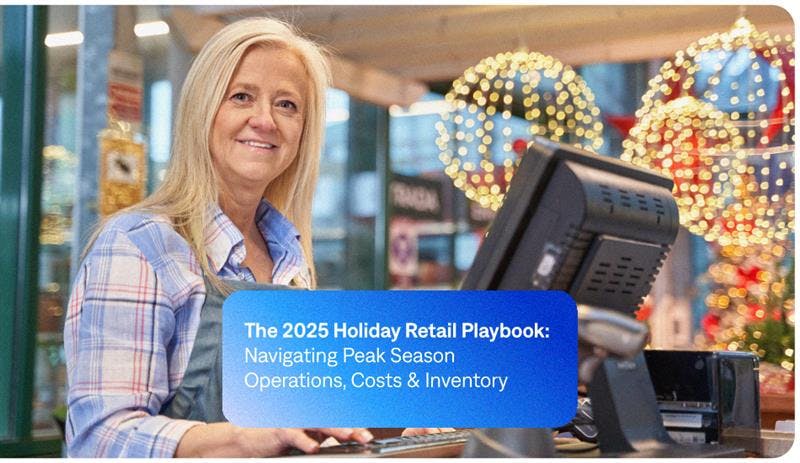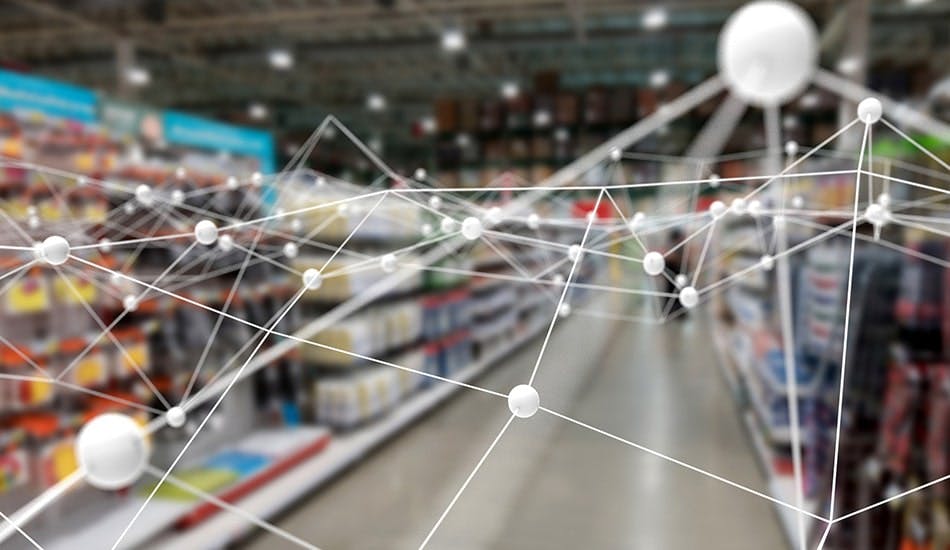As children, we built sprawling cities with colorful Monopoly money, meticulously arranged LEGO patterns where the next crucial piece seemed to magically reveal itself, and thrilled at the sight of a simple toy vehicle transforming into a powerful robot, adapting to any challenge. These weren’t just fond recollections; they’re echoes of the intuitive problem solving, strategic foresight, and dynamic adaptability that AI will bring to every corner of your business. Just as in Monopoly, players devised strategies to dominate the board by predicting opponent moves and property values, AI will empower inventory and labor managers to forecast demand with pinpoint accuracy, optimizing stock and workforce planning.
Like building with LEGOs, where individual bricks combine to create complex structures, different AI models will snap together to form comprehensive solutions, empowering frontline workers with instant information or automating complex tasks. And akin to Transformers, which seamlessly adapt their form to new situations, AI systems will dynamically adjust to changing market conditions, customer behaviors and operational needs. For decision makers, understanding how different AI types will empower specific users isn’t just about efficiency; it’s about igniting that same spark of strategic brilliance that fueled our play, now applied to the complex, evolving world of retail.
The AI Spectrum: A Strategic Arsenal
Think of AI as a toolbox, each specialized tool designed for a particular kind of challenge:
- Generative AI (Gen AI): This will be the creator in your toolbox. It will design new content, from personalized marketing copy to optimized store layouts, and even generate realistic synthetic data when real data is scarce – a true game-changer for “no data availability” scenarios.
- AI Agents: These will be your doers. Imagine autonomous systems, each programmed to execute specific tasks, interacting seamlessly with other systems or even people. They will be about automating the predictable and responding intelligently to the unexpected.
- Gen AI for Time Series Predictions: This will be your crystal ball. It will excel at forecasting future trends based on historical sequences, providing uncanny foresight for demand, staffing and resource allocation.
- Deep Learning: This will be your advanced pattern finder. A sophisticated form of machine learning, it will use vast neural networks to uncover subtle, complex patterns in massive datasets, revealing insights that humans might miss.
- Machine Learning (ML): This will be the learned decision maker. It’s the broad foundation where systems will learn from data to make predictions or decisions, constantly improving their tactical choices.
- Heuristics: These will be your smart shortcuts and pragmatic problem solvers. While AI sophistication will permeate many aspects of retail, some problems, particularly those classified as NP-hard (Non-deterministic Polynomial-time hard) like complex routing or optimal scheduling under numerous constraints, will often be more efficiently and practically solved using established methods like regression analysis, mathematical optimization, or well-designed heuristics. Employing cutting-edge AI for such problems might not be worth the cost in complexity, computational resources, and development time, making these simpler, yet robust, approaches the intelligent choice for rapid, reliable solutions.
Empowering Your Teams: AI in Action
Here’s how these powerful AI types will directly benefit key users across your retail operations, transforming their roles and unlocking new potential:
Inventory Managers: The Precision Orchestrators
For inventory managers, AI will be a strategic partner, helping them navigate the complex interplay of your product portfolio. With Transformer-based AI predictions, they will forecast demand with pinpoint accuracy. Imagine predicting the exact quantity of that new product needed in each store, accounting for local events and even social media buzz. This will allow for proactive management of cannibalization (where a new product eats into the sales of an existing one) and identification of halo effects (where a product boosts sales of related items), ensuring optimal stock levels and maximizing overall portfolio profit. Machine learning will then step in to optimize stock allocation across the entire supply chain, ensuring the right product is always in the right place at the right time.
Store Managers: The Local Performance Drivers
Store managers will be the conductors of their local orchestras. AI agents will provide them with real-time operational intelligence. An AI agent might analyze staffing schedules against predicted foot traffic and sales targets, then suggest optimal staffing adjustments for the coming week, directly to the manager’s dashboard. Deep learning will enable managers to gain insights into queue management, predicting customer wait times and suggesting proactive staffing adjustments or lane openings to minimize bottlenecks and improve customer satisfaction.
Frontline Workers (Retail and Quick-Service Restaurants): The Enhanced Experience Creators
AI agents will serve as instant knowledge repositories and personal assistants, handling routine queries so your human experts can focus on complex customer interactions. A retail associate could ask an AI agent via tablet about specific product features and instantly receive a concise, tailored answer. In a quick-service restaurant, an agent might quickly confirm an ingredient for a customer with allergies. Companies like Logile are already actively developing AI-driven solutions to empower your future retail frontline and quick-service restaurant workers through enhanced store communications and employee self-service tools.
Restaurant and Quick-Service Restaurant Workers: The Efficiency and Quality Champions
In the fast-paced world of quick-service restaurants, every second will count. Heuristics, combined with mathematical optimization, will provide quick, effective rules that streamline operations. For instance, a quick-service restaurant kitchen might use a heuristic-based system for “first-in, first-out” stock rotation for perishable ingredients, combined with an alert system to prioritize items nearing expiry, minimizing waste even during peak rush. This pragmatic approach will ensure rapid decision making for common, high-frequency tasks where the overhead of a full AI model might be disproportionate. Machine learning will then step in to optimize kitchen workflows and resource planning, predicting peak demand for specific menu items to ensure ingredients are pre-prepped precisely, reducing wait times and food spoilage.
Corporate Budgeting and Finance Teams: The Predictive Fiscal Guardians
For budgeting and finance teams, AI will transform planning from a retrospective report to a forward-looking strategy. Transformer-based AI predictions will empower them to generate sophisticated and dynamic financial forecasts. It will incorporate macroeconomic indicators, competitor pricing shifts, and even consumer sentiment to predict revenue and expenses with greater accuracy, enabling truly proactive budget adjustments. Meanwhile, deep learning will enhance fraud detection and anomaly identification in financial data, including attendance tracking and timekeeping records, spotting subtle, non-obvious patterns that indicate potential fraud, policy violations or inefficiencies, providing critical early warnings.
Business Intelligence Teams: The Insight Accelerators
BI teams will be the grand strategists, and AI will supercharge their ability to uncover winning patterns. Deep learning will allow them to uncover deeper, more complex relationships within massive datasets. Instead of just knowing “sales are down,” they’ll be able to identify underlying factors like a specific competitor’s new marketing campaign or a nuanced shift in online search behavior, providing richer, actionable insights. Generative AI will automate the creation of comprehensive reports and insightful summaries. Imagine prompting Gen AI to “Generate an executive summary of Q2 customer churn, highlighting key demographics and potential causes,” and receiving a draft report, freeing analysts to focus on more strategic initiatives.
Warehouse Managers and Associates: The Optimized Logistics Partners
The warehouse is the ultimate puzzle to solve, and AI will make it brilliantly simple. Machine learning will drive operational efficiency and resource optimization within the warehouse. ML algorithms will dynamically calculate the most efficient picking paths for associates based on order density and warehouse layout, significantly reducing travel time and improving order fulfillment speed. They’ll also optimize where incoming inventory should be placed (slotting). AI agents will automate repetitive tasks and enhance equipment utilization. Robotic Process Automation (RPA) agents will manage automated inventory counts, while autonomous mobile robots (AMRs), guided by AI, will intelligently navigate the warehouse to transport goods, ensuring every piece moves with precision.
Achieving More, Together: The Real Power of Retail’s Human + AI Advantage
As we stand on the cusp of this intelligent transformation, it’s easy to get lost in the algorithms and the data. But at its heart, this isn’t just about technology; it’s about amplifying the human spirit of ingenuity that has always driven progress. AI, in its myriad forms, will become the ultimate collaborative partner, empowering every individual in your organization to achieve more, to serve better, and to innovate with a renewed sense of purpose.
For maximum benefit, the key will be to integrate AI into our day-to-day operations with a human-in-the-loop approach, where AI provides powerful insights and automation, and human intelligence provides critical oversight, strategic direction, and nuanced decision making. It’s about creating a future where the tedious gives way to the creative, where uncertainty yields to insightful action, and where every interaction, whether with a customer or a colleague, will feel more human, more efficient, and more profoundly impactful. The intelligent future isn’t just arriving; it’s waiting for us to build it, together, one smart move at a time.
Recent Posts
NRF 2026 Guide: Top Trends Shaping the Future of Retail and What to Expect From Logile
2025-12-15
Logile celebrates 20 years at NRF 2026 with AI-powered workforce solutions. Visit Booth #4849 & #1503 to see how connected operations drive retail success.
Read More
UK Retail Budget 2025: What Retailers Need to Respond to Now
2025-12-02
The 2025 UK Budget is reshaping retail economics. Rising labour costs, higher rates, tighter margins—here's what retail leaders must prioritize now.
Read More
The 2025 Holiday Retail Playbook: Navigating Peak Season Operations, Costs & Inventory
2025-11-18
Fewer staff, higher costs, earlier shopping peaks—2025 holiday retail is different. Get strategies for staffing, inventory, and customer satisfaction to win this season.
Read More


